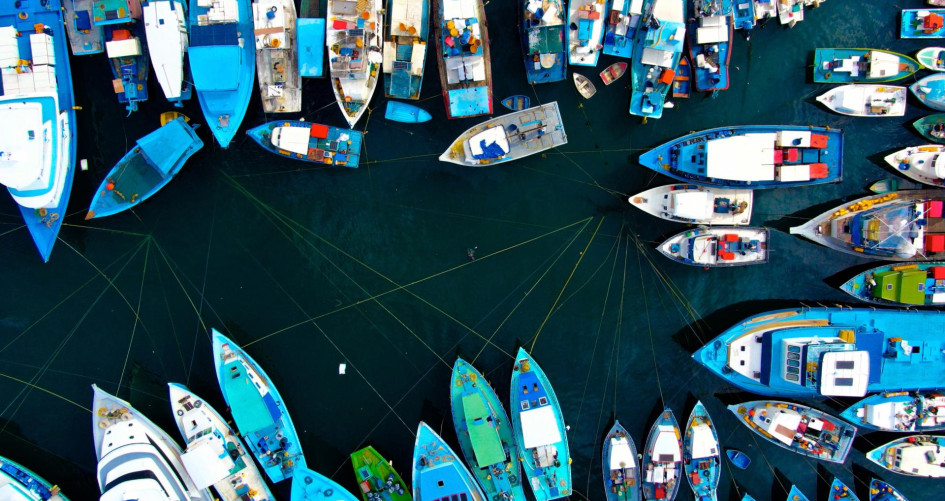On December 5th, 2017, the UN proclaimed the Decade of Ocean Science for Sustainable Development. What does that mean? Well, the goal is that a common framework is enacted to ensure that ocean science can fully support countries’ actions to sustainably manage the oceans and to achieve the 2030 Agenda for Sustainable Development.
When we talk about the Blue Economy, we are talking about all economic activity relating to oceans, seas and coasts, from fishing to renewable marine energy to coastal tourism. According to Madhushree Chatterjee, Chief of the Natural Resources and Interlinkages Branch of UN DESA’s Division for Sustainable Development Goals, “The Blue Economy comprises a range of economic sectors and related policies that together determine whether the use of ocean resources is sustainable.” Unsurprisingly, it is a huge sector, worth some $1.5 trillion a year, according to the World Bank.
The IPCC Special Report on the Ocean and the Cryosphere in a Changing Climate (SROCC) identifies linkages between the ocean and the climate and highlights that rapid emissions reductions are crucial, as a slower rate of ocean change provides greater adaptation opportunities. The SROCC stresses the important role of the ocean and coastal ecosystems in helping communities adapt to climate change, as well as the importance of protecting these ecosystems. Knowledge gaps remain in relation to many aspects of adaptation, which prevents particularly developing countries from taking action. Momentum is building, however, towards filling the knowledge gaps and forming partnerships for building the resilience of oceans and coastal areas.
In terms of the work the UNFCCC is doing in this area, the Oceans and Coastal Zones Climate Action Pathway has a number of milestones it wants achieved by 2021, 2025, 2030 and 2040. The Pathways are a tool developed by the Marrakech Partnership to enhance climate action and ambition to support the implementation of the Paris Agreement. These living documents set out a sectoral vision for a “resilient world” by 2050, and provide a roadmap for countries, businesses, regions and investors to reach the Agreement’s goals. So far, there has been progress. Currently 70 countries have marine spatial planning strategies either in the development or implementation phase.
So, what do some of these Blue Economy projects look like? Below are two projects backed by the International Union for Conservation of Nature (IUCN), which is part of the Ocean Group of the Nairobi Work Programme.
The Vanga Blue Forests Initiative, Kenya
Organised by the Wildlife Conservation Society (WCS) and Kenya Marine Fisheries Research Institute (KMFRI), the Vanga Blue Forests Initiative aims to restore and protect seagrasses with the sale of carbon credits in the communities of Vanga and Jimbo.
At the moment, both these areas face illegal fishing which threatens local fisheries and damages seagrass. WCS and KMFRI will also work with government agencies and local communities to map fishing patterns and seagrass habitats, identify new sites for seagrass closures and assess seagrass carbon stocks and sequestration potential. The quantified seagrass carbon will be later traded together with mangrove carbon. The project aims to generate climate, community and biodiversity benefits, and increase fishery stocks and resilience. Learning exchanges and capacity building for six local communities (around 300 people) will be facilitated with other funds. The conservation and restoration activities in the seagrass and mangroves will increase the capacity for these ecosystems to capture and store carbon stocks.
Seatech Seaweed Farming, Indonesia
Seatech, a Dutch company, has invented an engineering-backed seaweed farming approach with the potential to transform inefficient farming systems in developing countries around the word. With a design that allows users to adapt production to external conditions, Seatech’s seaweed farming platforms can be submerged and operate in deeper water where the temperature of the water is lower and more stable. This may increase harvest sizes 20-fold and decease the prevalence of seaweed pests.
The first farm, located in Takalar in South Sulawesi in Indonesia, was started in late 2019 and will eventually employ 500 locals (including 50 per cent women) on a 350 hectare site, according to Seatech’s Director, Jeroen Langelaan. All of the seaweed produced will be used for cattle feed.
As part of the project, the wild seaweed species Asparagopsis is also cultivated which has been found to almost eliminate methane release of cattle if added in relatively small amounts to feedstock, which will help reduce local agricultural emissions.
The platforms can be used at a variety of depths, so each seaweed farmer is able to adjust them depending on local conditions. “We are developing multiple farms for different seaweed species that will be used in different ways,” Langelaan says. “These include vegetable protein, animal feed, fibre, hydrocolloids (agar, carrageenan), and bioplastics. We also plan to ‘digest’ the seaweed waste from some of this uses and convert into biogas.” The project is supported by IUCN’s Blue Natural Capital Financing Facility
The aim is to kick start a competitive local seaweed industry, which can provide local jobs, as well as creating protected marine areas where underwater ecosystems can thrive. “Innovation plays a crucial role as the scale that is required to make an impact on climate adaption and mitigation is critical,” Langelaan adds.
You can read more about the UNFCCC’s engagement opportunities and resources under the Nairobi Work Programme here.
